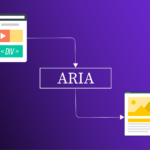Picture a world where anyone considering donating to your non-profit can effortlessly browse through your website. A world where people with visual impairments can easily grasp your cause, and those with mobility limitations can make online donations without any hassle. This isn’t just wishful thinking; it’s a reality full of opportunities that can be unlocked by embracing digital accessibility.
In today’s world, non-profits heavily depend on online platforms to connect with supporters and raise funds. But what if these platforms unintentionally exclude a significant portion of the population? Consider this: one in four adults in the US has a disability, representing a large donor base often overlooked due to inaccessible websites, which come with benefits like:
Enhanced Donor Experience:
Think beyond website glitches and imagine a seamless journey for every visitor. Accessible design principles like clear navigation, proper color contrast, and keyboard compatibility benefit everyone, not just those with disabilities. WebAIM’s study highlights this perfectly – over 90% of website errors hinder usability for all users. An accessible website creates a smooth and frustration-free experience that keeps donors engaged and builds trust.
Increased Donations:
Accessibility isn’t just about inclusivity; it’s smart fundraising. Accessible platforms with features like screen reader compatibility and text magnification tools empower a wider audience to donate with ease. The American Foundation for the Blind (AFB) serves as a powerful example. By implementing WCAG guidelines, the AFB witnessed a remarkable 30% increase in online donations, proving that accessibility translates directly to a stronger donor base.
Building Lasting Relationships:
Accessibility is more than a box to tick; it’s about fostering a sense of belonging. Donors who have a positive experience interacting with your accessible website or social media are more likely to become long-term supporters. They’ll feel valued, understood, and empowered to become advocates for your cause, inspiring others to join the movement.
Investing in accessibility isn’t a burden; it’s an opportunity for exponential growth. Documenta11y understands this and provides a wealth of resources to empower non-profits in the digital accessibility journey. From free guidance to comprehensive best practice guides, Documenta11y equips you with the knowledge and tools to unlock the full potential of your online donor engagement.
Beyond Websites: Expanding Accessibility
Consider the growing popularity of online fundraising campaigns and events. Here are five use cases to illustrate how accessibility can be expanded across various digital touchpoints:
Live-streamed Fundraising Events:
Make virtual fundraising events inclusive by incorporating closed captioning for the hearing impaired. Additionally, consider offering transcripts of the event for those who cannot access the live stream or prefer to follow along by reading.
Social Media Engagement:
Social media platforms are a powerful tool for donor outreach. Utilize alt text descriptions for all images to ensure everyone can understand the content you’re sharing. Explore features like live captions for video content to make social media campaigns accessible to a wider audience.
Online Donation Forms:
Simplify online donation forms by using clear and concise language. Ensure forms are compatible with screen readers and allow for keyboard navigation for users with mobility limitations.
Educational Resources:
Many non-profits offer educational resources online, such as articles, infographics, and videos. Provide transcripts for video content and ensure documents are compatible with screen reader software.
The Takeaway:
In a world increasingly reliant on digital interaction, accessibility is no longer an option, it’s a necessity. By embracing digital accessibility, non-profits can create a welcoming and inclusive environment for all potential donors. Join Documenta11y and unlock the full potential of your online donor engagement. Together, let’s make a difference, one accessible interaction at a time.

 5 Key Things to Look for When Choosing a PDF Accessibility Partner
5 Key Things to Look for When Choosing a PDF Accessibility Partner How Semantic Structure and Regions Improve Digital Accessibility
How Semantic Structure and Regions Improve Digital Accessibility Less ARIA, More Accessibility: Documenta11y's Guide to Cleaner Web Content
Less ARIA, More Accessibility: Documenta11y's Guide to Cleaner Web Content

